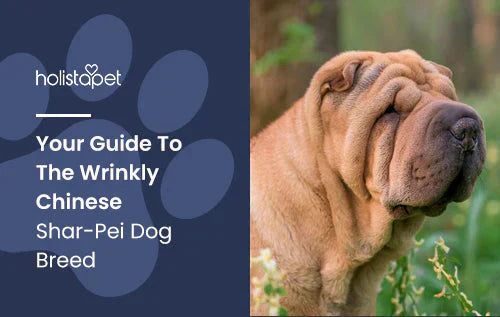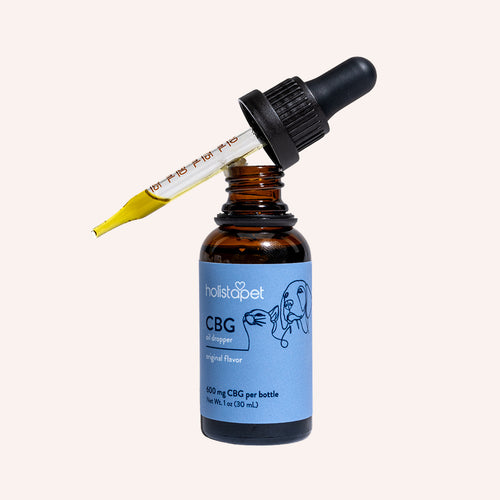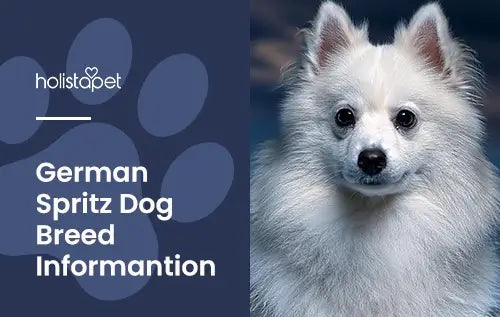The Chinese Shar-Pei is a captivating wonder of the canine world. This is no ordinary dog breed—everything from appearance to temperament is bred for boldness and purpose. Originating from the Han Dynasty in China, the Shar-Pei is a tried-and-true protector and friend to humans. Serving as fierce guard dogs for many centuries, the Shar-Pei carries that same nature to family homes even today. This article will walk you through what makes the Shar-Pei so unique.
Physical Characteristics
The Chinese Shar-Pei is one of the most distinctive-looking breeds of dogs on the planet. Expect this breed to get the entire street stop-and-stare when on a walk; it's bound to draw eyes anywhere it goes. Some say it resembles a toasted marshmallow more closely than a dog. With its loose skin, beady eyes, and "hippopotamus" muzzle, the Chinese Shar-Pei is a breed that warrants a double (or triple!) take.
Coat
If you've ever seen a Chinese Shar-Pei, their comically wrinkled exterior becomes apparent quickly. The folds of loose skin covering this dog's head, neck, and shoulders make the dog appear a little chubby — albeit adorable. These folds aren't comprised of fat at all, however. They occur due to a high concentration of hyaluronic acid in the skin. Hyaluronic acid is a compound that thickens the skin.
The Shar-Pei puppy wasn't always as wrinkly as it is today. Breeders increased these wrinkles through selective breeding because the trait was considered attractive. This breed outgrows some folds as it matures from a puppy to an adult, so a young Shar-Pei often has more folds than an older one.
Loose folds aren't the only unusual thing about this dog's coat. Their short fur has a rough texture, and this trait is actually what earned the breed its name (Shar-Pei translates to "sand skin" in Chinese). The fur can even be abrasive to the touch if you stroke it against the grain.

Head
Some characteristics (besides their coat) set the Shar-Pei apart from other dog breeds. For one, they have blue-black tongues. They share this trait with Chow Chows, but no other breeds have this tongue coloration. Shar-Pei also has small, triangular ears that fold forward. Their eyes are also small, sometimes giving them a scowling expression. This breed's broad, square muzzles have been compared to a hippo's.
Tail
The Chinese Shar-Pei has a tapered, high-standing tail that can curl over the back or stand straight in the air. A tightly curled tail is sometimes called a "coin tail." When the breed was used as a fighting dog centuries ago in China, a dog with a tail that stood straight or lay between its legs was considered cowardly.
Breed Size
An adult Shar-Pei grows 18-20 inches tall at the shoulder and can weigh 45-60 pounds. Their bodies are square, and this breed's head is disproportionately large for its stout body.
Breed Personality
The Chinese Shar-Pei is loyal. Though they're very independent, these dogs will always stick close to their owner for companionship. This black-tongued dog breed prefers the company of people more than other dogs. Shar-Peis, through consistent attention, gain a deep understanding of their owner's routines, rituals, and personalities. That said, it is no surprise that the breed fiercely protects its keepers.
The protective nature of the Chinese Shar-Pei is both a blessing and a curse. On the one hand, their natural tendency to guard makes them a brilliant and alert breed. On the other hand, their close relationships with their owners can make this breed stand-offish with strangers if they aren't socialized well. Not every Shar-Pei will be wary of newcomers, though. If you properly socialize your Chinese Shar-Pei when they're young, they will be less likely to show aggression towards strangers as they bond with you and your family.
Besides their protective nature, the Chinese Shar-Pei is remarkably calm. They rarely bark; if they do, it will be because they are worried and trying to alert their owner of danger. Nothing else ruffles their folds like a threat to their keeper. The Chinese Shar-Pei is otherwise a very chill puppy. It's worth mentioning that a Chinese Shar-Pei will need an owner who can stay on top of their training. The breed can get stubborn and develop a dominance complex if no one puts them in their place. You can thank their innate intelligence and autonomy for this trait.

Exercise
A Chinese Shar-Pei doesn't require much exercise but requires daily walks. A brisk walk of about 20 minutes will keep your dog healthy. The Shar-Pei is relatively active indoors and requires no yard to play.
However, make sure you don't exercise your Shar-Pei too vigorously.
This delicate breed is considered brachycephalic (meaning they have a short skull). They have a hard time cooling down after exercise. This is due to the respiratory issues of brachycephalic dog breeds; narrowed nostrils and an elongated soft palate often constrict their airways.
Related: How Much Exercise Does a Dog Need Every day? [All Breeds & Ages]
Training
The best-trained Chinese Shar-Pei started training at a young age. You should start socializing and training your Shar-Pei as soon as possible so they don't become stubborn or aggressive. A Shar-Pei that isn't put into its place can become the leader of its owners, and we all know that the situation is supposed to be the other way around.
Dogs typically respond best to gentle commands and positive reinforcement. Consistent reinforcement is critical to establishing authority and gaining the dog's respect. Remember, the Chinese Shar-Pei is very intelligent, and they will learn basic commands quickly. The real challenge in training the Shar-Pei is keeping them from getting bored and maintaining their obedience. Since the Chinese Shar-Pei is so intelligent, it is essential to make teaching an ongoing and challenging process. If you keep their minds stimulated, they will be more likely to obey you.
Obedience classes are great for Chinese Shar-Pei puppies because they provide socialization and basic training. Puppy socialization is crucial for young Shar-Pei because it gets them accustomed to other dogs and people. This early exposure will reduce their aggressive tendencies as they mature. You will be very grateful you took the time to socialize your dog when they grows into a well-mannered adult that doesn't nip other dogs at the park.

History
The Chinese Shar-Pei came from southern China, perhaps as early as 200 B.C. The breed may have descended from the Chow Chow, another oriental breed with similar characteristics (like the blue and black tongue), but this is not confirmed. These dogs are bred for guarding, herding livestock, and hunting.
When the Communist Party gained control of China in the 1940s, the Chinese Shar-Pei came close to extinction. The Communist regime saw the breed as a symbol of the past and promptly began exterminating the dogs. In 1966, the Shar-Pei was exported to the United States, and some avoided persecution in the rural areas of Taiwan and Hong Kong.
It wasn't until 1973 that a breeder named Matgo Law asked Western canine enthusiasts to help him save the Chinese Shar-Pei. The call was answered, and with the help of American breeders, the Chinese Shar-Pei population rebounded in the 1970s and 80s
Related Post: Asian Dog Breeds: Asia's Most Iconic Dogs
Health Problems
Chinese Shar-Peis are vulnerable to several health conditions, so you must pay close attention to their well-being. Keep up with routine grooming and exercise, and always bring your dog to the vet if you are unsure of their condition. You can prevent most health issues with proper care.
Skin Fold Infections
Due to the density of the Shar-Pei's skin folds, excess heat and moisture can trap bacteria and cause infection. Staph infections and mange are both commonly found underneath Shar-Pei's skin folds. You can prevent these conditions by ensuring your dog's folds are clean and dry. Regular brushing helps stimulate natural oils to protect the skin, aiding in prevention. Always check your Shar-Pei's skin folds for signs of irritation, like redness or foul odor.

Entropion
The hair can sometimes scratch and irritate the corneas because the Chinese Shar-Pei has wrinkles around its eyes. This leads to entropion, a condition marked by ulcers and irritation around the eyes. Entropion can lead to permanent blindness if left untreated. You'll know your Shar-Pei suffers from this condition if their eyes are puffy, watery, and often squinting. Entropion is more common in puppies, as the issue can be resolved as the dog grows out of its wrinkles. Tack the eyelids into a normal position to prevent the hair from scratching the eye.
Hypothyroidism
Hypothyroidism is a condition that occurs when the thyroid (a gland responsible for regulating metabolism) doesn't produce enough thyroid hormone. As a result, a Chinese Shar-Pei with this condition suffers from a sluggish metabolism, and the first signs usually show up in their coat. Your Shar-Pei may experience dandruff, hair loss, and secondary infections due to a weakened immune system.
Mast Cell Tumor
The Chinese Shar-Pei is more susceptible to mast cell tumors than other dog breeds. These tumors develop in their skin folds when a buildup of mast cells (a type of white blood cell that regulates allergic responses) forms a nodule (small round lump) in the skin. Mast cell tumors are surgically removed, and the prognosis for the cancer is good if the tumors are removed in the earlier stages of growth.
Inflammatory Bowel Disease
A Chinese Shar-Pei has a higher risk of developing inflammatory bowel disease (IBD), a digestive condition that affects the dog's ability to absorb nutrients. IBD occurs when the intestines become overactive with plasmacytes and lymphocytes. These cells produce an immune response that attacks harmful pathogens in the digestive tract, but when too many of them, they thicken the intestine walls and block the absorption of nutrients. The condition is treated with medication, diet, and lifestyle changes.
Fever
As it turns out, Shar-Pei's have their brand of fever. The cause of Shar-Pei fever is unknown, but it may be genetic. This condition is characterized by swelling of the hocks (ankles) and a high fever. If left untreated, the fever can lead to liver failure, so it's essential to get this condition under control quickly as soon as the first symptoms appear. A fever is usually recurrent, meaning your dog will likely suffer from it multiple times.
Bloat
The Chinese Shar-Pei is more at risk of developing bloat when gas gets trapped in the stomach with no escape. Symptoms of bloat include a swollen abdomen, retching, drooling, restlessness, and inability to vomit or pass gas. Bloat is a very serious condition that can quickly progress to stomach torsion and death.
How to Care for a Shar-Pei Breed
The Chinese Shar-Pei is one of the best companions you can ask for! They're easy to care for — keeping them entertained is hard. With the proper nutrition, grooming, and exercise routine, your Shar-Pei can live a long and happy life.

Nutrition and Feeding for the Shar-Pei Breed
Feeding your Chinese Shar-Pei twice daily will decrease its chance of bloat. Always balance your dog's activity and food level—an inactive dog will require less food than an active dog. Avoid excess protein, as it can make your pup lethargic and raise its body temperature (which is problematic because this breed cannot regulate its temperature as quickly as other dog breeds).
A diet rich in Omega-3 and six fatty acids will nourish your pup's skin and help keep its folds healthy. Some breeders recommend a fish-based kibble because it provides an optimal protein content and a good source of Omega acids.
Coat Color and Grooming
This breed is easy to groom because of its short fur and lack of an undercoat. It would be best if you rarely bathed a Shar-Pei, and you can get away with brushing their coat about once a week. The breed hardly sheds, but they will go through periods of molting when they shed abundantly. During these periods, brush your pup daily and bathe them weekly to remove excess hair and help the new coat grow. This dog can sport a tan, black, grey, or white coat. The breed also features distinct coat types that describe the coarseness of the fur.
Horse Coat
The horse coat is the shortest and very rough to the touch. The original coat has likely stuck with the breed for centuries. This coat changes the most as this dog grows from a puppy to an adult. A Shar-Pei with a horse coat has fewer folds than their wrinkly counterparts.
Brush Coat
The brush coat is more prolonged and softer than the horse coat. The fur can grow up to one inch long, the longest that will be accepted in show rings. A Chinese Shar-Pei with a brush coat has more wrinkles than a horse coat.
Children and Other Pets
This dog's tolerance of children and pets depends on its socialization and personal temperament. If exposed to children and other pets as puppies, they will be less territorial and possessive. If you adopt an older dog, inquire about its prior experiences with other animals and people. Early socialization makes a world of difference for this dog breed.
Personal temperament also factors into the equation. Most dogs of this breed are loyal to their families under all circumstances and will tolerate nuisances caused by children or other animals. Others may lose patience and get snippy. If possible, inquire about the temperament of this breed's parents before adopting, as this can be one predictor of how they will interact with other members of your family.

Rescue Groups
Several groups are preserving the Shar-Pei worldwide. In the western region of the United States, the Pei People Shar-Pei Rescue has been rescuing and rehoming these dogs since 2007. They maintain a network of foster homes, veterinarians, and trainers who aid their efforts in providing the best care for surrendered or abandoned dogs all over the West Coast and surrounding states.
Operation Scarlet began on the eastern side of the U.S. when the founders rescued their own (Scarlet) from a neglectful farm home in Lancaster County, Pennsylvania. Their love for Scarlet inspired them to start the rescue after Scarlet died in 1989. Operation Scarlet has been rescuing and providing services for abandoned Shar-Peis in the region since 1991.
Breed Organizations
The Chinese Shar-Pei Club of America, Inc. (CSPCA)is the largest breed-specific organization in the United States. It works with regional clubs nationwide and hosts national breeding and therapy programs.
More About The Shar-Pei
This breed is the 134th breed recognized by the American Kennel Club. This breed lives up to 12 years, often filling their lives with grunts, snorts, and snores. If you're looking for a dog that will always stick by your side no matter what, you can't go wrong with the blue-black-tongued dog. This breed surpasses so many others when it comes to loyalty, intelligence, and confidence.


 CBD Oil for Dogs - Fast Acting
CBD Oil for Dogs - Fast Acting
 Chicken Flavored CBD Oil For Dogs - Easy Dose
Chicken Flavored CBD Oil For Dogs - Easy Dose
 Salmon Flavored CBD Oil For Dogs - Highly Rated
Salmon Flavored CBD Oil For Dogs - Highly Rated
 CBG Oil for Dogs and Cats - Loved by Thousands
CBG Oil for Dogs and Cats - Loved by Thousands





Leave a comment
All comments are moderated before being published.
This site is protected by hCaptcha and the hCaptcha Privacy Policy and Terms of Service apply.